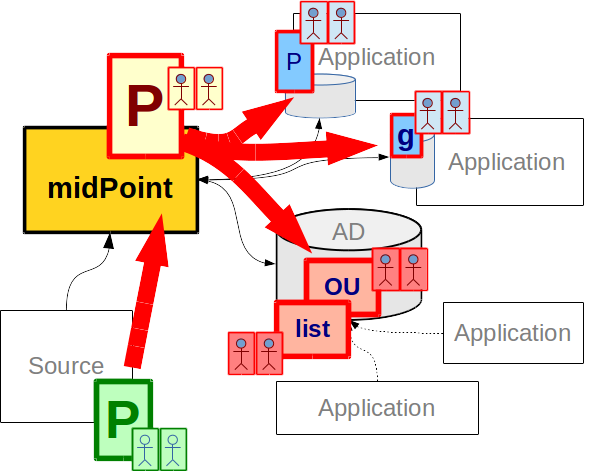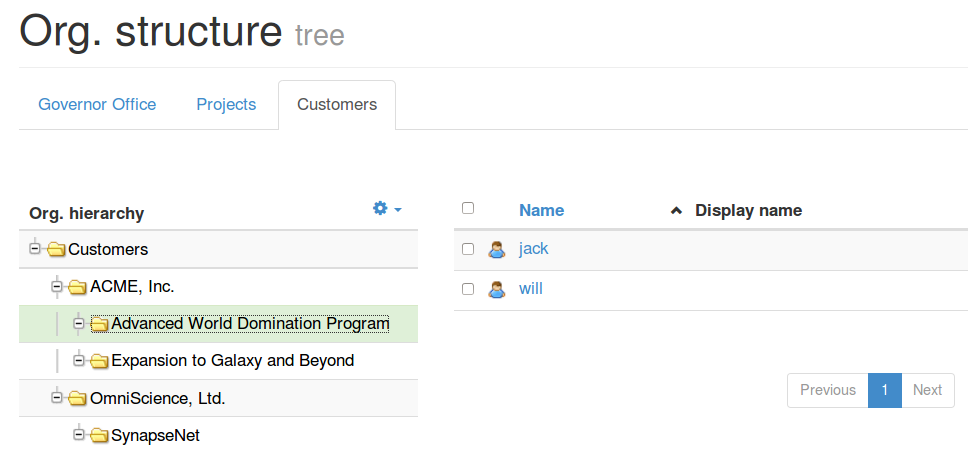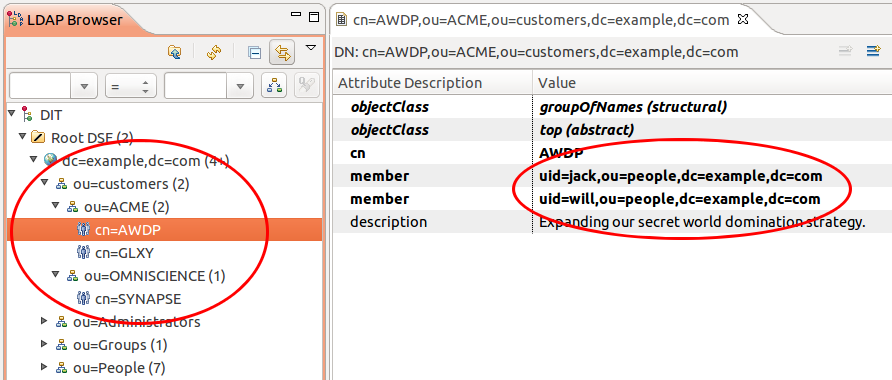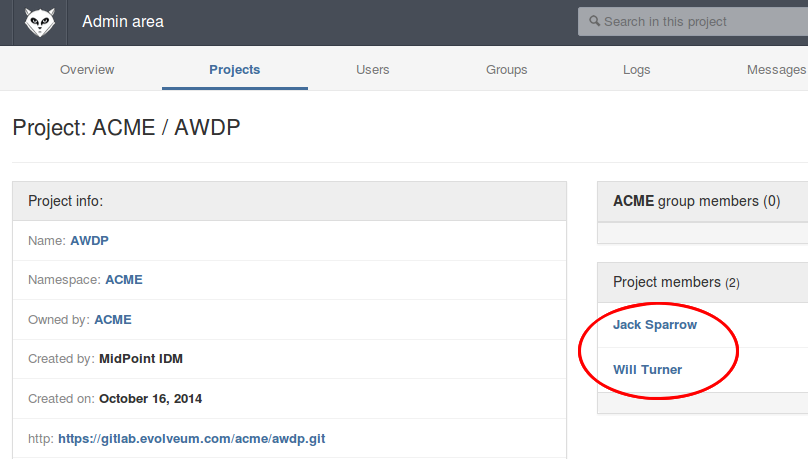Evolveum midPoint is a very unique Identity Management (IDM) system. MidPoint is a robust open source provisioning solution. Being an open source the midPoint is developed in a fairly rapid, incremental and iterative fashion. And the recent version introduced a capability that allows midPoint to reach beyond the traditional realm of identity management.
Of course, midPoint is great in managing and synchronizing all types of identities: employees, contractors, temporary workers, customers, prospects, students, volunteers – you name it, midPoint does it. MidPoint can also manage and synchronize functional organizational structure: divisions, departments, sections, etc. Even though midPoint does it better than most other IDM systems these features are not exactly unique just by themselves. What is unique about midPoint is that midPoint refines these mechanisms into generic and reusable concepts. MidPoint mechanisms are carefully designed to work together. This makes midPoint much more than just a sum of its parts.
One interesting consequence of this development approach is unique ability to provision projects. We all know the new lean project-oriented enterprises. The importance of traditional tree-like functional organizational structure is diminished and flat project-based organizational structure takes the lead. Projects govern almost any aspect of the company life from development of a new groundbreaking product to the refurbishing an office space. The projects are created, modified and closed almost on a daily basis. This is usually done manually by system administrators: create a shared folder on a file server, set up proper access control lists, create a distribution list, add members, create new project group in Active Directory, add members, create an entry in the task tracking system, bind it with the just-created group in Active Directory … It all takes a couple of days or weeks to be done. This is not very lean, is it?
MidPoint can easily automate this process. Projects are yet another type of organizational units that midPoint manages. MidPoint can maintain an arbitrary number of parallel organizational structures. Therefore adding an orthogonal project-based structure to existing midPoint deployment is a piece of cake. MidPoint also supports membership of a single user in arbitrary number of organizational units therefore this efficiently creates a matrix organizational structure. As midPoint projects are just organizational units they can easily be synchronized with other systems. MidPoint can be configured to automatically create proper groups, distribution lists and entries in the target systems. And as midPoint knows who are the members of the project it can also automatically add correct accounts to the groups it has just created.

However, this example is just too easy. MidPoint can do much more. And anyway, the modern leading-edge lean progressive organizations are not only project-based but also customer-oriented. The usual requirement is not only to support internal project but especially the customer-facing projects. Therefore I have prepared a midPoint configuration that illustrates automated provisioning of such customer projects.
The following screenshot illustrates the organizational structure maintained in midPoint. It shows a project named Advanced World Domination Program (or AWDP for short). The project is implemented for a customer ACME, Inc.. The project members are jack and will. You can also see another customer and a couple of other projects there. The tabs also shows different (parallel) organizational structures maintained by midPoint. But now we only care about the Customers structure.

MidPoint is configured to replicate the customer organizational unit to LDAP. Therefore it will create entry ou=ACME,ou=customers,dc=example,dc=com. It is also configured to synchronize the project organizational unit to the LDAP as an ldap group. Therefore it will create LDAP entry cn=AWDP,ou=ACME,ou=customers,dc=example,dc=com with a proper groupOfNames object class. MidPoint is also configured to translate project membership in its own database into a group membership in LDAP. Therefore the cn=AWDP,... group contains members uid=jack,... and uid=will,....

Similar configuration is used to synchronize the projects to GitLab. The customers are transformed to GitLab groups and GitLab projects are created in accord with midPoint projects.

… and project members are correctly set up:

All of this is achieved by using a relatively simple configuration. The configuration consist of just four XML files: one file to define access to each resource, one file to define customer meta-role and one for customer project meta-role. No custom code is used except for a couple of simple scriptlets that count just several lines of Groovy. Therefore this configuration is easily maintainable and upgradeable.
And midPoint can do even more still. As midPoint has a built-in workflow engine it can easily handle project membership requests and approvals. MidPoint has a rich delegated administration capability therefore management of project information can be delegated to project managers. MidPoint synchronization is bi-directional and flexible one system can be authoritative for some part of project data (e.g. scope and description) and another system for a different type of data (e.g. membership). And so on. The possibilities are countless.
This feature is must have for any lean project-oriented organization. Managing projects manually is the 20th-century way of doing things and it is a waste of precious resources. Finally midPoint is here to bring project provisioning into the 21st century. And it does it cleanly, elegantly and efficiently.
Hi,
Having project structure in IDM is really useful. A lot of our customers were asking for it; and I find it weird that other IDMs don’t support it (except DellQuest Idm).
As far as I understand OOTB there is no possibility to add approval process for project creation (when project is created in UI), am I right?
How difficult is to add this functionality?
I also think that there is one feature that would allow to get even more from having a few parallel organizational structures:
when ‘assign role’ request is created for user who is assigned to a few org structures, it would be nice if requester could choose one of them (and store this choice on ‘user’-‘role’ association), so it can be used in approval process to determine approver (to send approval request not to line manager, but to project owner if beneficiary needs role for this project).
Right now I’m implementing it in Oracle Idm, but I hope that one day there will be Idm that has it as OOTB feature.
Regards,
Ivan